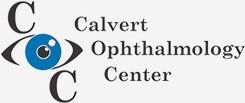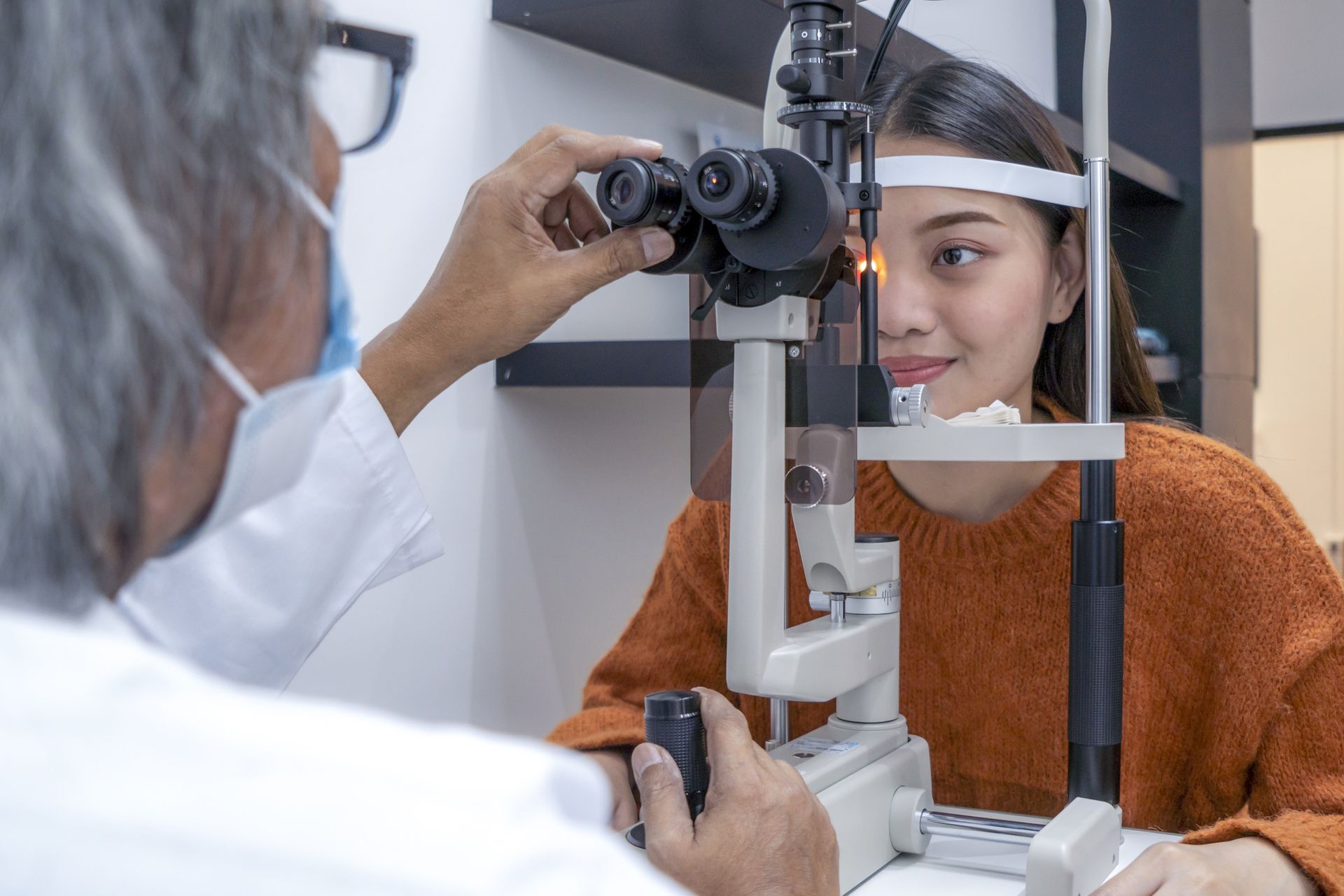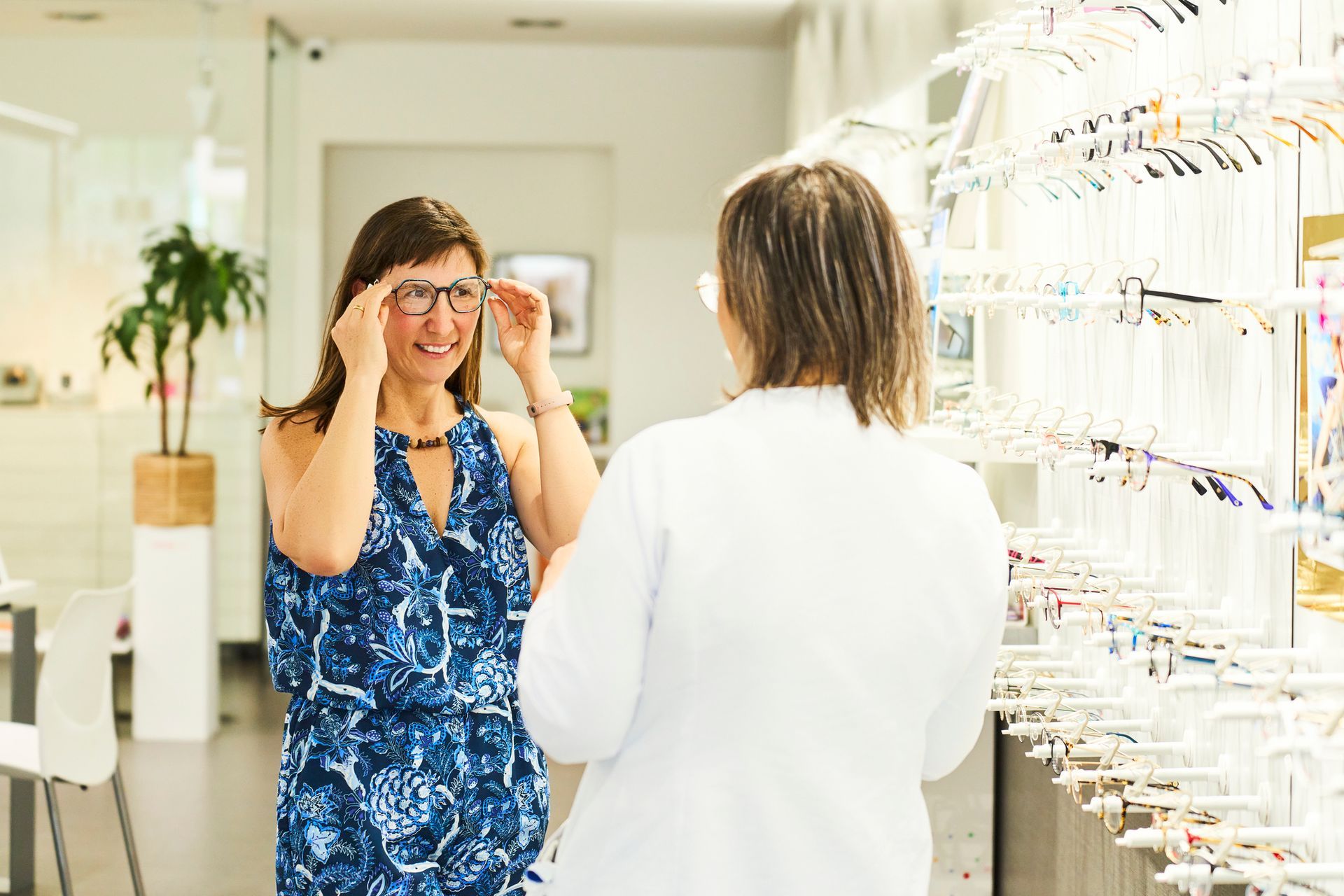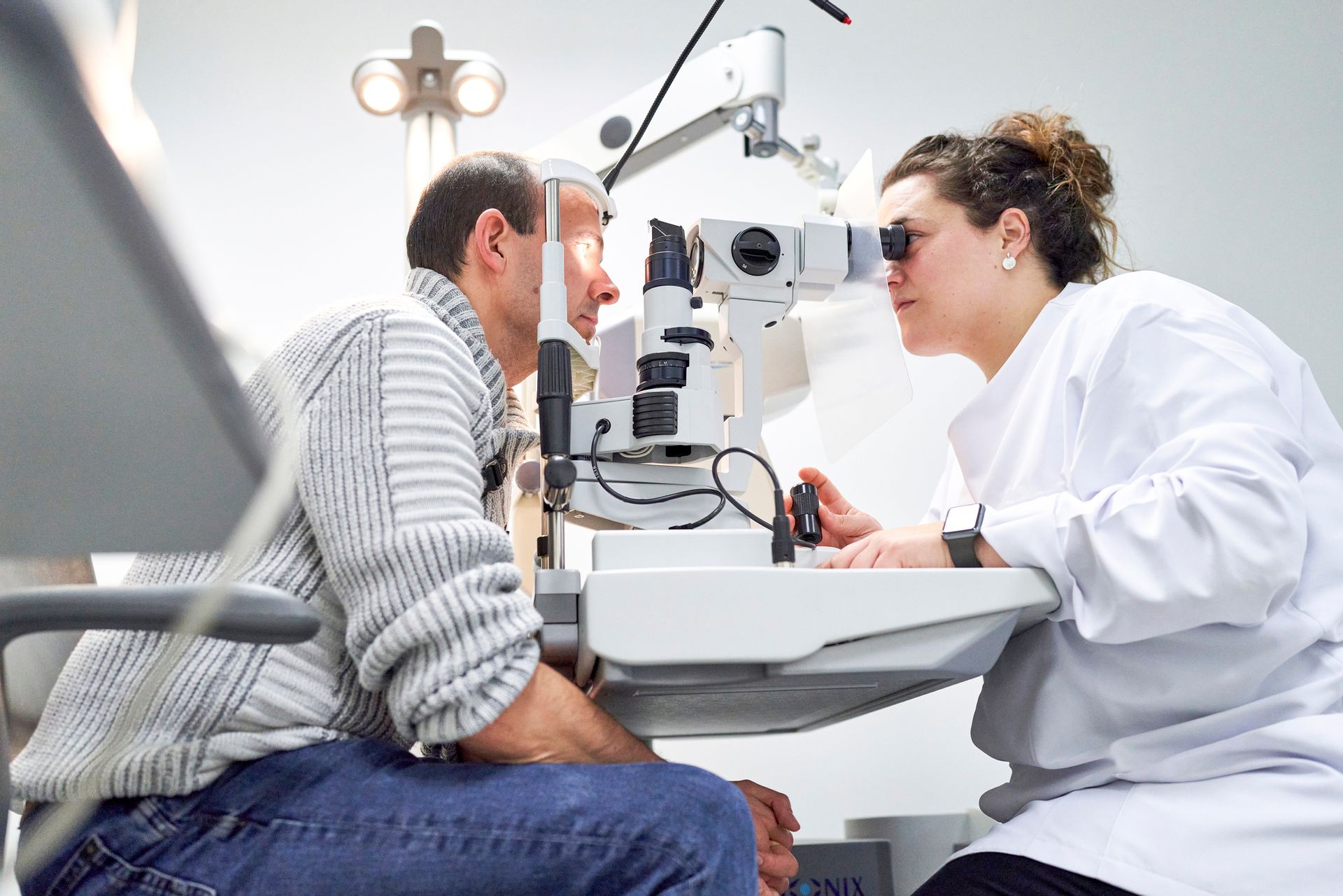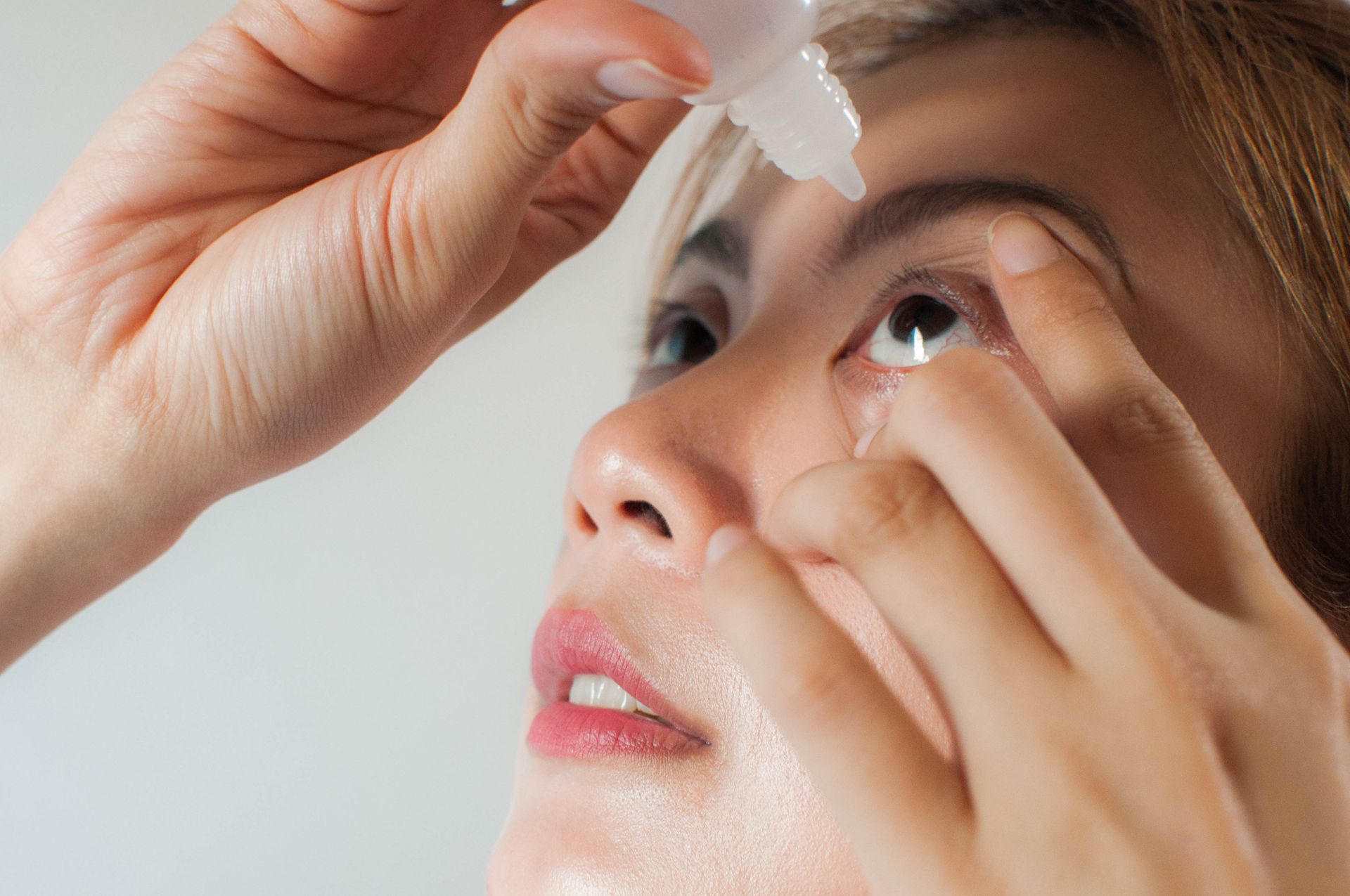5 Types of Eye Drops Explained
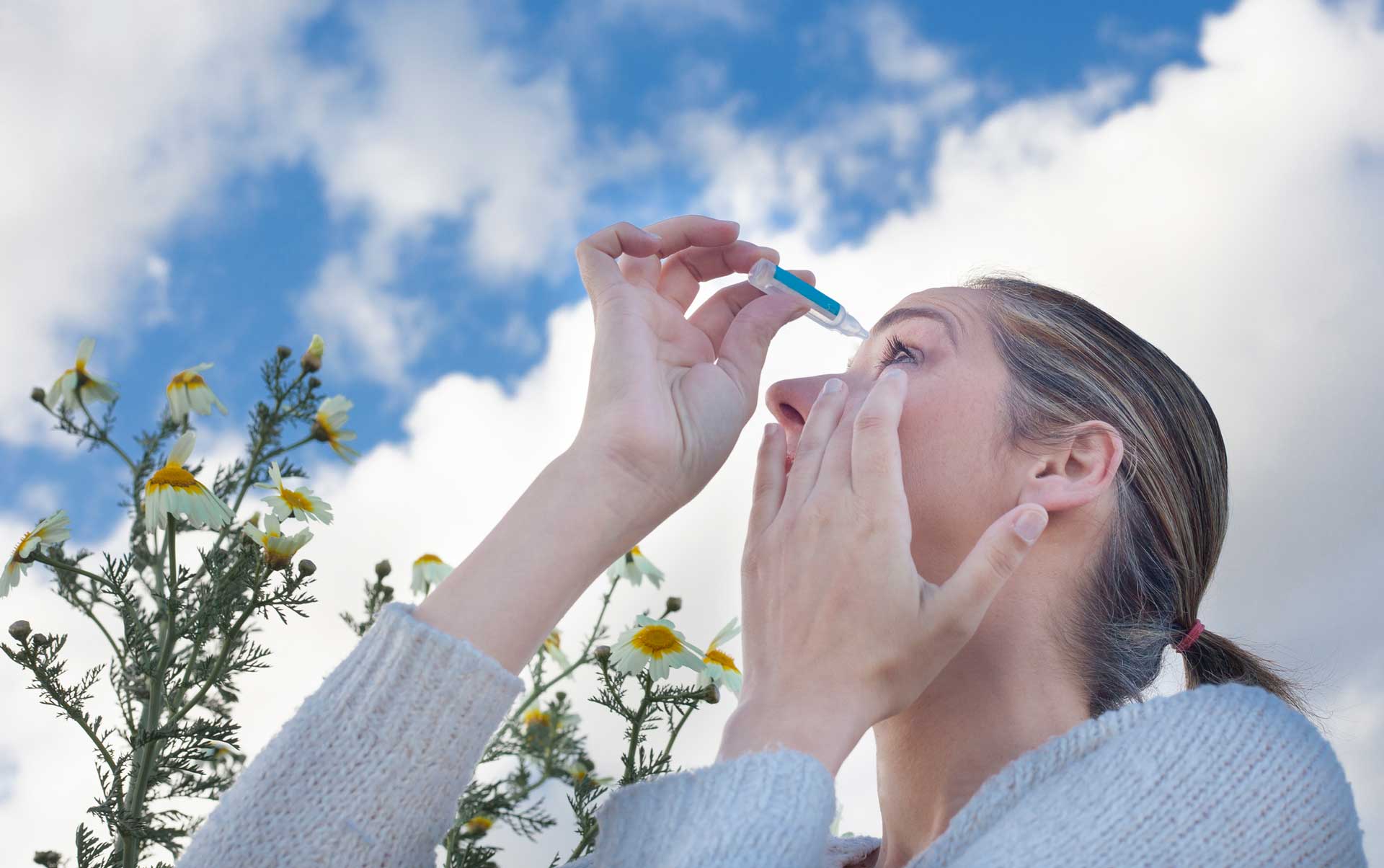
Over 117 million Americans reported using some kind of eye drops in 2020. A visitor to a typical pharmacy or grocery store may see entire aisles of eye drops, with a wide range of formulations and active ingredients to choose from. Ophthalmologists also use or prescribe different types of eye drops for eye exams and treatment.
If you find the wide world of eye drops confusing, you'll have a better idea of what you're using and why once you understand the different purposes of these products. Take a look at the following five types of eye drops and their effects.
1. Eye Drops for Dry Eyes
Dryness can plague your eyes with redness, itching, irritation, and light sensitivity. In addition to occasional dryness from exposure to dry or windy environments, many people suffer from chronic dry eye syndrome. If you have this problem, either you don't produce enough tears or the tears you produce evaporate too quickly.
Over-the-counter eye drops can help to correct such imbalances, at least temporarily. These products usually contain a blend of lubricants, electrolytes, and ingredients that help to preserve your eye moisture. Your ophthalmologist may recommend eye drops with or without preservatives, depending on the severity of your dry eye problem.
Some dry eye sufferers may benefit from specialized prescription eye drops. These eye drops contain extra ingredients that encourage tear production and/or reduce chronic inflammation.
2. Eye Drops for Removing Redness
Red eyes can occur for many reasons above and beyond dry eye syndrome. Allergies, infections, contact lens irritation, or sheer fatigue can cause blood vessels to swell up, leaving you with bloodshot eyes. Decongestant eye drops bring the swelling down while also (in some cases) lubricating the surface of the eye.
Keep in mind that decongestant eye drops often produce an unwanted rebound effect after about 72 hours of relief. For this reason, you should avoid using them on a long-term basis.
3. Eye Drops for Pupil Dilation
When you receive a comprehensive eye exam, your eye doctor will usually apply eye drops that dilate your pupils. This dilation permits a clearer view of more of the eye's interior, helping the eye doctor identify the telltale physical signs of macular degeneration, optic nerve damage (from glaucoma), and retinal injuries that might cause blindness.
The benefits of these eye drops come with some temporarily annoying side effects. You may experience a stinging sensation when the eye drops first go in. The dilation occurs after 20 or 30 minutes and may last for several hours, creating blurred vision and light sensitivity. (Have a pair of UV-blocking sunglasses on hand.)
4. Eye Drops for Glaucoma
Glaucoma damages the optic nerves, usually due to elevated fluid pressure inside the eye. Although this condition can lead to severe, irreversible vision loss if it goes untreated, modern treatment methods can prevent it from doing additional damage. Medicated eye drops serve as the first line of defense against glaucoma.
Different eye drops fight glaucoma in different ways, with the same primary goal of reducing pressure. Some eye drops contain drugs that help the eye drain excess fluid more normally. Others actually reduce the amount of fluid produced within the eye. Whichever kind you use, you'll probably need to use it every day.
5. Eye Drops to Treat Injuries or Infections
Eye infections and injuries can both cause pain, swelling, redness, and damage to the affected eye. Your ophthalmologist may use eye drops as part of your treatment plan in such cases. Anti-inflammatory and analgesic eye drops can ease your symptoms, but you can only get them if you have a prescription.
If you have a bacterial eye infection, your eye doctor can give you a prescription for antibiotic eye drops. This direct approach to eliminating the bacteria should yield results in a matter of days.
Calvert Ophthalmology Center can serve as your information resources for all kinds of eye conditions and treatment methods, including the safe, proper, effective uses of eye drops. Contact any of our ophthalmology locations today to schedule a consultation, examination, or eye disorder treatment.
